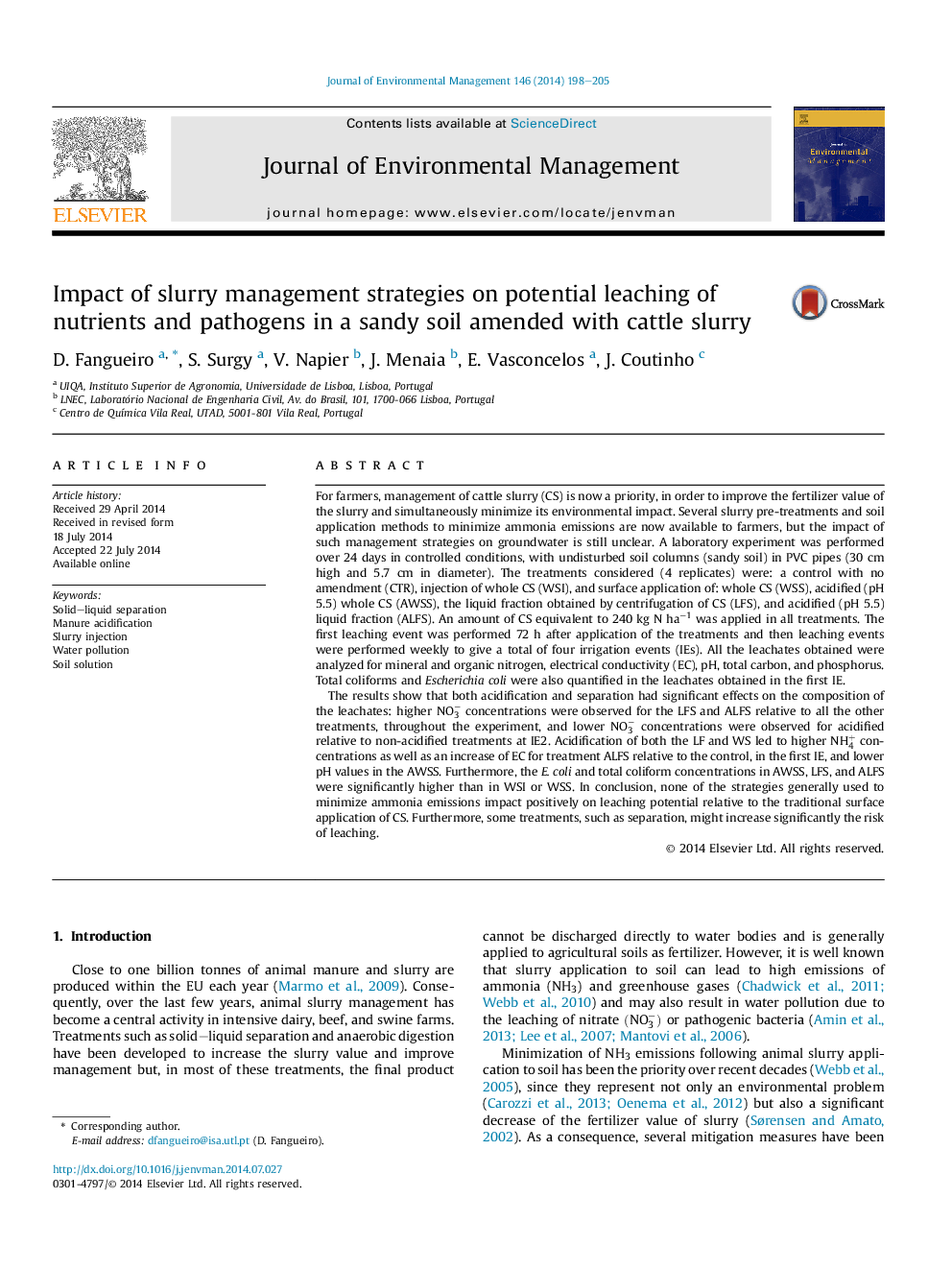| Article ID | Journal | Published Year | Pages | File Type |
|---|---|---|---|---|
| 7483405 | Journal of Environmental Management | 2014 | 8 Pages |
Abstract
The results show that both acidification and separation had significant effects on the composition of the leachates: higher NO3â concentrations were observed for the LFS and ALFS relative to all the other treatments, throughout the experiment, and lower NO3â concentrations were observed for acidified relative to non-acidified treatments at IE2. Acidification of both the LF and WS led to higher NH4+ concentrations as well as an increase of EC for treatment ALFS relative to the control, in the first IE, and lower pH values in the AWSS. Furthermore, the E. coli and total coliform concentrations in AWSS, LFS, and ALFS were significantly higher than in WSI or WSS. In conclusion, none of the strategies generally used to minimize ammonia emissions impact positively on leaching potential relative to the traditional surface application of CS. Furthermore, some treatments, such as separation, might increase significantly the risk of leaching.
Related Topics
Physical Sciences and Engineering
Energy
Renewable Energy, Sustainability and the Environment
Authors
D. Fangueiro, S. Surgy, V. Napier, J. Menaia, E. Vasconcelos, J. Coutinho,
